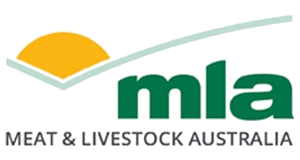V.RDA.0003 - Enhancing animal disease feedback reporting
Animal disease benchmarking systems linked with carcase quality and external georeferenced data (like weather) extends the usefulness of carcase feedback and provides valuable management information to producers.
| Project start date: | 11 April 2021 |
| Project end date: | 29 June 2022 |
| Publication date: | 30 January 2024 |
| Project status: | Completed |
| Livestock species: | Grain-fed Cattle, Grass-fed Cattle, Sheep, Goat, Lamb |
| Relevant regions: | National |
Summary
Meat inspection findings are potentially of managerial value to producers. Information linking diseases and defects found at meat inspection to the meat quality of carcases was examined from a pilot study of four cattle processors. Analysis identified quantifiable relationships between disease and carcase quality. There were also important regional differences noted, with cattle movements impacting disease prevalence.
Objectives
This study explored the potential of extending the LDL carcase-focused database to include meat inspection disease and defect data and link with external data sources (such as weather data) more broadly. Such an integrated reporting and benchmarking system will enable producers to assess their disease control performance and assess relative performance.
Key findings
BOM raster-format median rainfall data file was used to estimate the median rainfall of PIC regions, and this showed a relationship between rainfall and carcase performance. This demonstrates the value of linking external data to LDL.
An LDL disease benchmarking system linked with carcase quality and external georeferenced data (like weather) extends usefulness of LDL and provides valuable management information to producers. This can show trends at consignor, PIC region, state and national level and (potentially) future changes to be predicted from analysis of internal and external data sources.
Benefits to industry
This study explored the potential of extending the LDL carcase-focused database to include meat inspection disease and defect data and link with external data sources (such as weather data) more broadly. Such an integrated reporting and benchmarking system will benefit the industry through enabling producers to assess their disease control performance and relative performance.
MLA action
Development of disease weighting tables that partition the lifetime risk of disease development for individual animals bases upon their PIC zone of birth, PIC zone of consignment and their production system.
Future research
A meat inspection disease and defect quality assurance system using statistical process control techniques is recommended for LDL. Mechanism-driven exploration (by analysts that understand the red meat production system at farm level) of associations between external georeferenced data sources, LDL carcase and disease and defect data is encouraged as this will preferentially identify causal relationships.
More information
| Project manager: | Demelsa Lollback |
| Contact email: | reports@mla.com.au |


